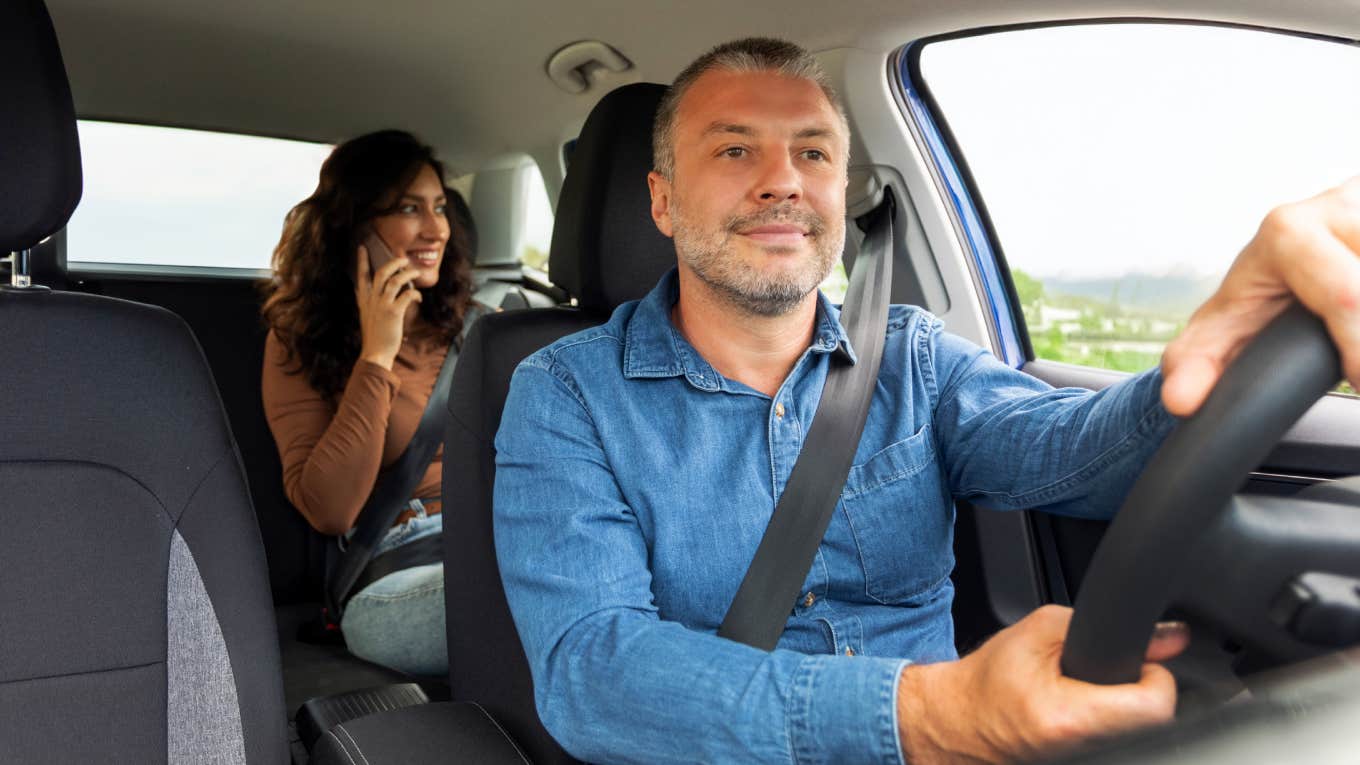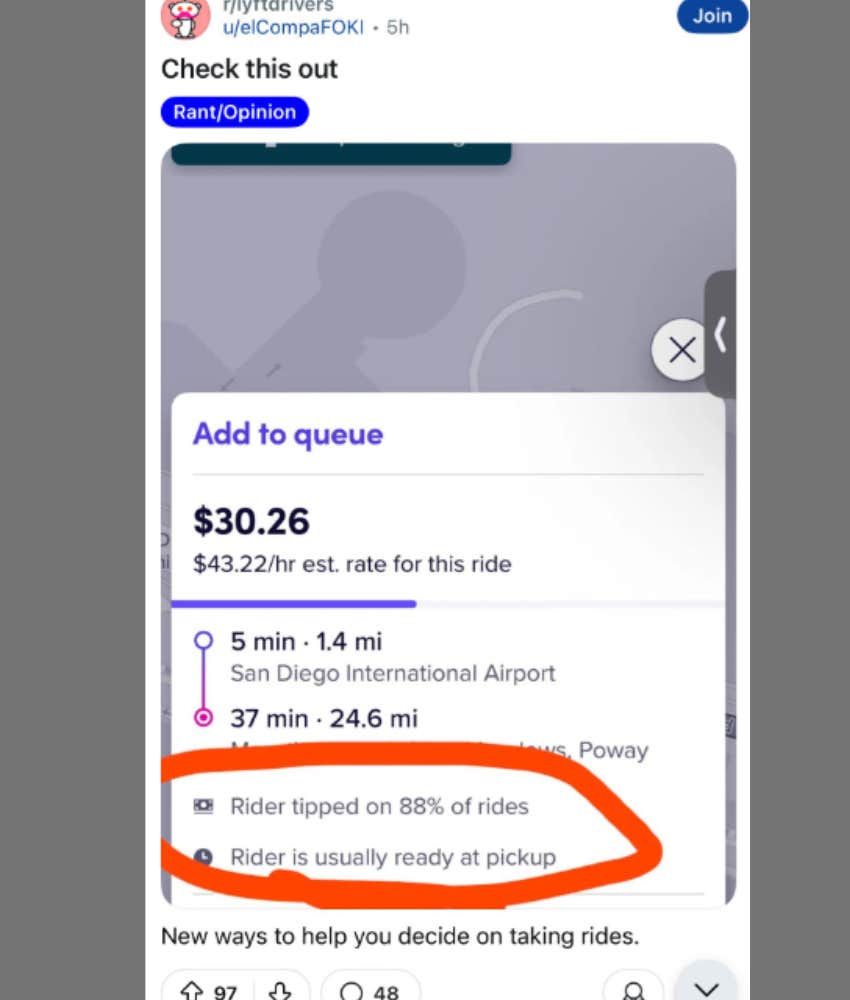Customer Boycotts Lyft After Realizing The Information Drivers See About Passengers Before Pickup
The information is supposed to help Lyft drivers make decisions about who to pick up for a ride, but it seems customers aren't happy about it.
 fast-stock | Shutterstock
fast-stock | Shutterstock Ride-share services have undoubtedly made life easier, but what was once novel and exciting is starting to sour. Case in point: a Lyft customer who found out how much personal information drivers have access to before picking up passengers for a ride.
Posting a screenshot to the subreddit "r/EndTipping," a frustrated Lyft customer claimed that they were no longer using the service after finding out that drivers have access to a potential passengers tipping history and even their promptness.
A customer said they are boycotting Lyft after realizing the information drivers see about passengers before pickup.
In a screenshot of what Lyft drivers must see before picking up a passenger, they were able to tell how much the rider usually tips. For the person the driver was picking up in the photo, they could see that they only tipped on 88% of the rides they took.
Not only that, but drivers were also able to see just how prompt or late a passenger was during pickup.
 Reddit
Reddit
It's apparently a new feature that allows Lyft drivers to decide if they want to pick up a ride or not. The person expressed their irritation with the fact that Lyft drivers were now able to decline rides, if they wanted to, based on how likely the customer was to tip them.
People in the comments section shared the same sentiment, expressing the fact that they already have to pay outrageous costs for a simple ride, but find it absurd that, on top of that, they have to leave a tip for the driver too.
Most Lyft and Uber drivers don't earn a significant portion of their income from tips.
According to Business Insider, in the span of three and a half weeks, a ride-share driver was tipped an average of $0.46 across 57 Lyft trips, or an overall tip rate of 3.1%. That's compared to the 15% to 20% tip range that many customers leave at restaurants.
The conversation surrounding tipping culture for ride-share drivers, and even servers at restaurants, is nothing new. It doesn't help that Americans are struggling to make ends meet and therefore often lack the necessary funds to leave tips for their drivers.
In a study from Gridwise, a data analytics company and app helping drivers track their earnings, nearly 90% of food-delivery trips received a customer tip, compared with 75% of grocery-delivery trips and 28% of Uber and Lyft ride-share trips.
Fifty-one percent of food and grocery drivers’ incomes come from tips, compared with 10% for ride-share drivers.
On top of that, 78% of ride-share drivers said tips mattered significantly to their overall incomes.
Considering many of these ride-share drivers depend on tips to make their money, it's no wonder that Lyft decided to release a feature that allowed drivers to know which customers would be more likely to tip them versus those who probably wouldn't.
It's less about leaking customers' private information and more about trying to help drivers secure rides that will bring more money into their pockets.
At the end of the day, ride-share drivers deserve to make a livable wage, but considering the app takes a majority of their earnings, they must rely on tips to do it.
Like it or not, in the U.S., tipping is an essential part of service workers' livelihoods. We don't have to like it, but until things change, if we use the services, we should be tipping at least 20%.
Nia Tipton is a staff writer with a bachelor's degree in creative writing and journalism who covers news and lifestyle topics that focus on psychology, relationships, and the human experience.

